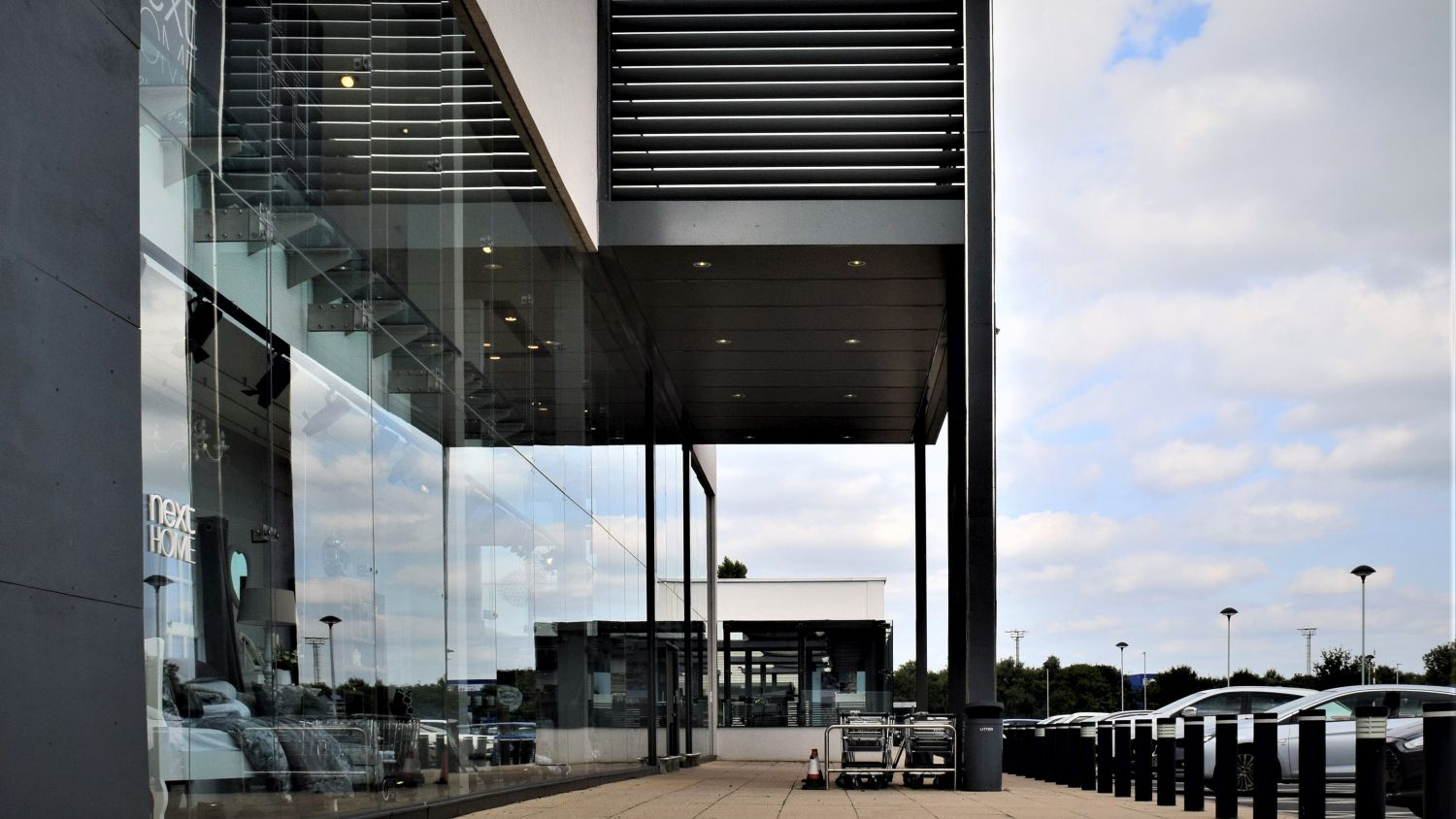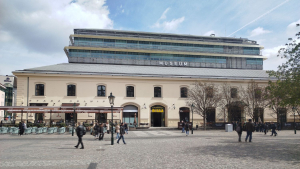
Traditional shopping centres and retail parks continue to attract visitors and remain popular destinations for shopping, socialising and entertainment. They are valued for their modern facilities, strong offerings and appealing promotions. But do customers prefer retail parks for grocery shopping? Where do they tend to purchase clothing or cosmetics? What is the demographic profile of shoppers? To answer these and many other questions, global real estate services firm Cushman & Wakefield has conducted a survey, the findings of which are presented in its latest report. Cushman & Wakefield notes that despite evolving shopping trends, both retail formats continue to hold strong appeal.
Mature shopping centres vs. young retail parks and their frequency of visits
Shopping centres, which began to be developed in Poland in the late 1990s, have already reached market saturation. By contrast, although retail parks have led the way for new supply in recent years, their total stock remains three and a half times smaller than that of shopping centres. There are currently 256 parks on the market, more than half of which were built in the last five years. In contrast, of the 456 shopping centers, only about 7% of the stock is five years old or less.
"Shopping centres and retail parks differ in layout, offerings and transport accessibility. The former typically feature a more diverse tenant mix and a stronger entertainment component, while the latter prioritise shopping convenience and ease of access to stores. Retail parks are seen as more practical, providing a less sensory-stimulating experience. The boundaries between the two retail formats are sometimes blurred, with retail parks offering an increasingly varied tenant mix. Brands once associated primarily with shopping centres are now expanding into retail parks. While shopping centres and retail parks may seem to compete with each other, they often operate in synergy, attracting customers to entire retail complexes and enhancing the prestige of the surrounding urban area or district", comments Ewa Derlatka-Chilewicz, Head of Research, Cushman & Wakefield.
A Cushman & Wakefield survey conducted on a sample of 1,610 respondents has found that 42% of city inhabitants visit shopping centres once a week or more often, while 84% visit them at least once a month. Retail parks typically report slightly lower footfall than shopping centres. However, given their smaller floorspace, they still enjoy a stable market position and attract considerable customer interest. According to the survey, 33% of respondents visit retail parks at least once a week, while 73% visit them at least once a month.
"A comparison of the latest survey findings and those from 2023 reveals that shopping centres experienced an improvement in the frequency of visits, with an 11 pp decrease in respondents visiting them less often than once a month and an 8 pp increase in weekly visits. Retail parks also saw positive, though more moderate, changes in frequency of visits – weekly visits increased by 3 pp, while the share of respondents who never visit them declined by 3 pp", explains Ewelina Staruch, Senior Analyst, Cushman & Wakefield.
The younger the customer, the more popular the shopping centre
Consumer preferences for shopping centres or retail parks strongly correlate with the demographic profiles of customers, including their place of residence. Cushman & Wakefield’s report looks at these correlations in Warsaw, other large cities with over 200,000 inhabitants and smaller cities.
"Retail parks are significantly less popular in Warsaw - only 24% of respondents visit them once a week or more often, compared to 36% in smaller towns. In terms of demographics, shopping centres are most frequently visited by the youngest group – those aged 18-29 – who view them as convenient places for not only shopping but also leisure and entertainment. By contrast, older consumers, those in the 50-65 age group, tend to prefer standalone food stores, public markets and bazaars", adds Ewa Derlatka-Chilewicz.
Additionally, shopping centres are more frequently visited by consumers from four-person or larger households with children. 51% of these consumers visit them at least once a week.
Car ownership is a significantly more important factor in visits to retail parks than financial situation and household size, as retail parks are typically located outside city centres and offer ample parking spaces.
Furthermore, as many as 56% of respondents sometimes choose a shopping centre over a retail park due to weather conditions.
In Cushman & Wakefield’s survey, shopping centres and retail parks were also rated on three criteria: “Price attractiveness and promotions”, “Assortment range” and “Customer service and shop assistant experience”. They were rated on a 1 to 5 scale. The consistently high scores, averaging around four out of five, indicate that survey respondents value these retail formats and appreciate their many advantages.
The tenant mix vs. top shopping destinations
Analysis of data on the tenant mix of shopping centres in Poland’s largest agglomerations has revealed that fashion retailers make up the largest share of stores, accounting for 27% of all. This confirms that clothing, footwear and accessories have long been primary drivers of foot traffic in shopping centres. Services came second with a 16% share, reflecting a steady increase in spending over the years, driven by the rising affluence of Polish society.
"The rising proportion of gastronomy, now standing at 11%, reflects the global trend of shopping centres evolving into meeting and leisure destinations, as well as the increasing popularity of eating out. Entertainment accounts for 2% of all units, but its share of total area is significantly larger, as cinemas, bowling alleys, playrooms, and gyms occupy large spaces. Although entertainment operators do not make up the majority of the tenant mix, they play a key role in driving footfall and encouraging customers to extend their visits beyond shopping", adds Ewelina Staruch.
The tenant mix in retail parks differs significantly from that in shopping centres due to their different functions and visitor preferences.
Retail parks are dominated by “Homeware and DIY”, accounting for 19% of all stores, compared to just 3% in shopping centres. This confirms that retail parks cater more to homeware shoppers who prefer them for purchasing large practical items that can be more easily transported by car. Value retailers such as Pepco, Dealz, TEDi, Action, KiK, and Woolworth also play a significant role in retail parks, accounting for 12% of all stores, compared to just 2% in shopping centres.
"Cushman & Wakefield’s survey has found that shopping centres are the preferred destination for clothing purchases and services, while retail parks are the top choice for large grocery and pharmaceutical purchases. These differences stem from the varying availability and range of offerings in these retail formats. Therefore, it is crucial for retail landlords and other market players to continuously monitor consumer trends and adapt to evolving consumer behaviours and preferences. It is also worth considering individual analysis and the fact that some retail parks share characteristics similar to shopping centres", says Katarzyna Szymańska, Shopping Centre Director, Matarnia Retail Park.
Supplementary functions of shopping centres and retail parks
Shopping centres and retail parks have long since become not just places for shopping but also venues where non-retail needs can be met. Large shopping centres are the undisputed leader in meeting entertainment needs, chosen by 50% of respondents for this purpose. Although retail parks are not as strongly associated with entertainment as shopping centres, they still attract over 15% of respondents with their entertainment offerings.
"Shopping centres play an important role in meeting the gastronomic needs of Polish consumers. While restaurants and gastronomy points outside modern retail facilities remain the most popular choices, the F&B offerings of shopping centres are attracting growing interest. The C&W survey of 1,610 consumers has found that large and small shopping centres experienced year-on-year increases in popularity of 5 pp and 9 pp, respectively. Analysis of trends by age group reveals that individuals aged 18-29 have a strong preference for large shopping centres (45%). This is the only customer group for whom large shopping centres are the preferred choice for eating out with family and friends. Attentive observers of F&B trends are already responding to customer demands by expanding and enhancing F&B offerings, thereby strengthening their presence in local markets", concludes Michał Masztakowski, Head of Retail Agency Poland, Cushman & Wakefield
As the retail park sector continues to grow, this format is expected to keep evolving, adapting to new trends and needs while attracting investors who recognise their potential as dynamic and sustainable retail spaces of the future.



